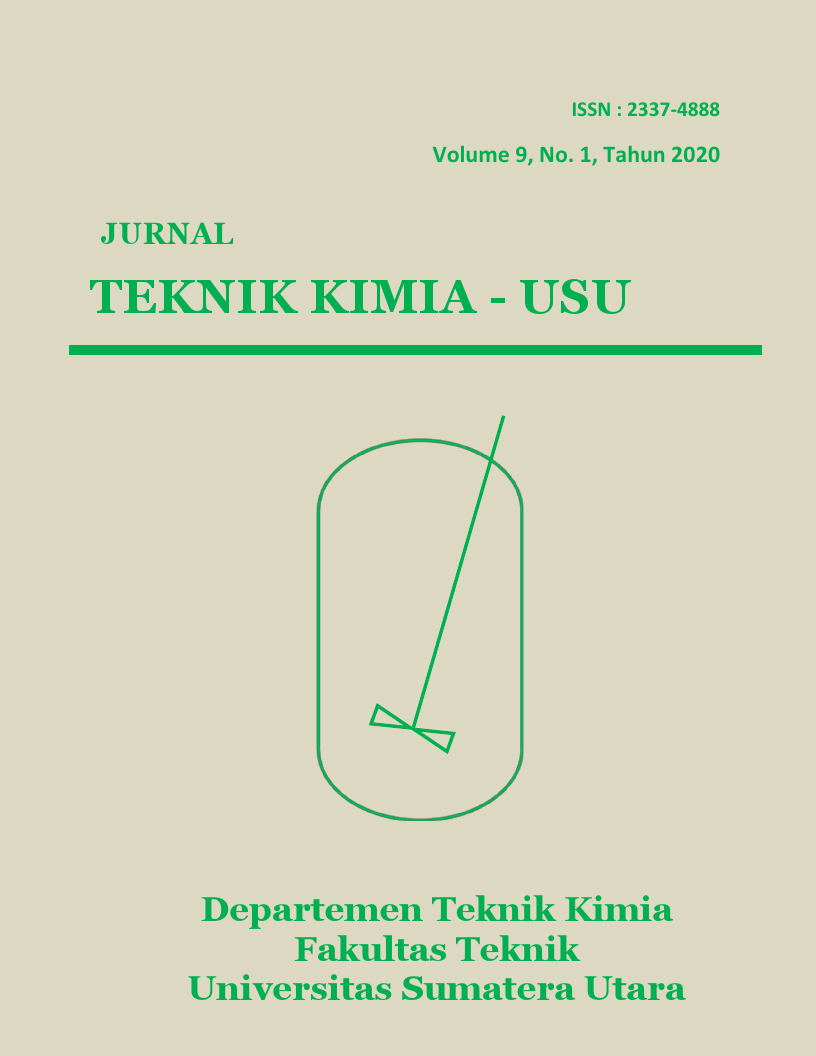Optimasi Suhu Hidrolisis dan Konsentrasi Asam Sulfat dalam Pembuatan Nanoselulosa Berbahan Dasar Serat Batang Pisang Kepok (Musa acuminata x balbisiana)
DOI:
https://doi.org/10.32734/jtk.v9i1.3532Keywords:
nanocrystalline cellulose, kepok banana fiber, acid hydrolysis, yield, water solubilityAbstract
This research aims to investigate the optimal hydrolysis temperature and sulfuric acid (H2SO4) concentration in isolating nanocrystalline cellulose (NCC) from kepok banana pseudostem fiber with the best yield and water solubility. In this research, cellulose fiber was delignified with NaOH at 80°C for 5 minutes, then followed by bleaching with hydrogen peroxide (H2O2) for 30 minutes twice. NCC was isolated through acid hydrolysis with H2SO4 (40%, 45%, 50%, 55% v/v) at 45 °C, 50 °C, 55 °C, 60 °C for 1 hour and ultrasonicated for 5 minutes. NCC crystal was then characterized through Transmission Electron Microscopy (TEM), and water solubility. TEM analysis showed the isolated NCC has a measured length of 125 – 144 nm. The highest NCC yield was obtained at 60°C and 55% H2SO4 at 26.75%. This analysis showed that NCC yield increases with increasing H2SO4 concentration and hydrolysis temperature. The lowest water solubility obtained is 0%, which shows the purity of the cellulose used to isolate NCC.

















